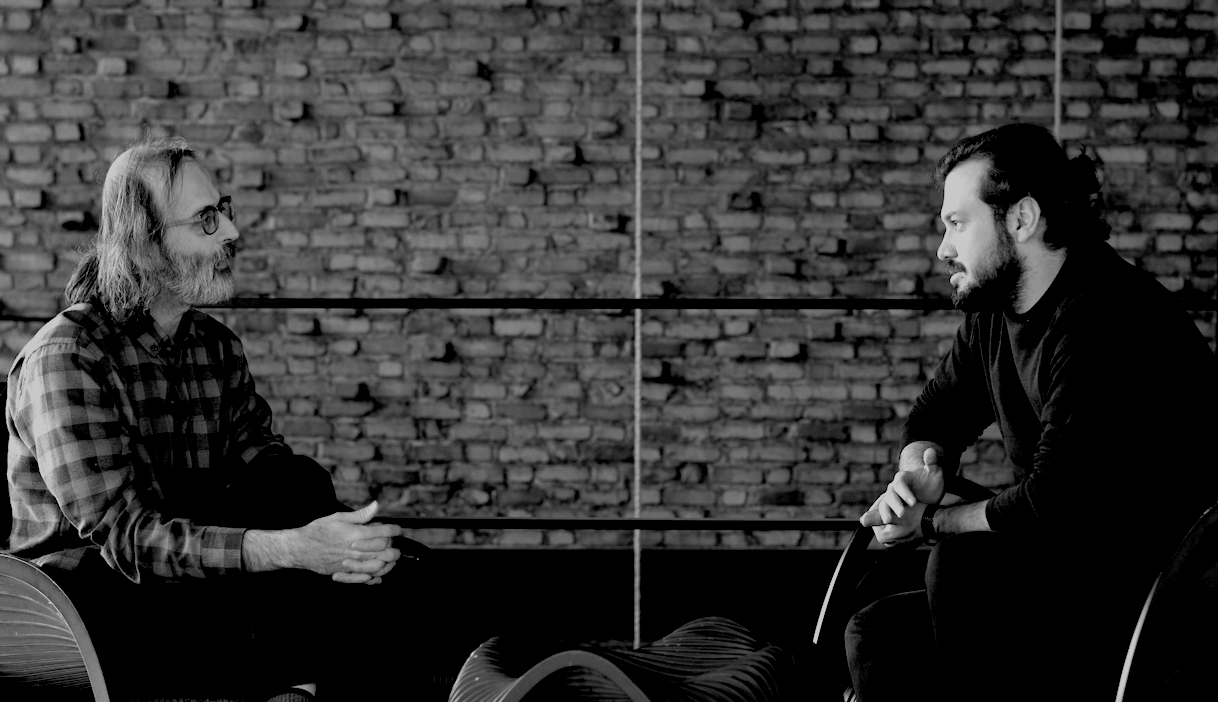Based on a conversation with Saleh Najafi about the “Entertainment in Public” Project
In a deeply engaging and thought-provoking discussion, Saleh Najafi explores the intersections of execution, entertainment, and the representation of violence in art and culture. The conversation, held in an informal yet intellectually rich setting, touches upon historical, philosophical, and cinematic perspectives, unraveling the paradoxes of modernity and the spectacle of death.
The Intersection of Idea and Execution
Najafi begins by reflecting on how ideas evolve and, at times, become so layered and complex that their realization becomes nearly impossible. He draws a parallel between this artistic dilemma and execution itself—both involve a moment of transformation, where an idea or a body transitions from one state to another. Execution, in its etymological sense, means to bring something into reality, yet in the context of capital punishment, it signifies the termination of life. This duality raises questions about whether execution is an act of creation or destruction, a paradox that extends into artistic and intellectual endeavors.
Execution as Public Entertainment
One of the key themes discussed is the role of execution as a public spectacle. Historically, executions were public events, serving as both punishment and a form of mass entertainment. Najafi examines how this phenomenon has shifted over time, particularly in modern societies where execution has moved behind closed doors. Yet, he argues, the psychological and symbolic weight of execution persists, finding new expressions in cinema, literature, and even gaming.
The idea of public entertainment, as referenced in the exhibition, plays with this historical shift. The act of witnessing violence has been sublimated into the realm of media—where audiences consume scenes of death and destruction in controlled environments, experiencing a paradoxical pleasure in viewing what is otherwise forbidden in reality. Najafi draws on Filmmaking like Michael Haneke, who critiques the “consumable violence” that cinema offers, questioning whether art and media normalize, aestheticize, or critique acts of violence.
The Role of Translation in Modernity
Najafi also delves into the role of translation in shaping Iran’s modern consciousness. He argues that much of Iran’s engagement with modernity has been mediated through translation, especially in the realm of political and philosophical thought. Concepts such as freedom, justice, and even entertainment have been introduced through foreign texts, sometimes leading to a fragmented or incomplete understanding of their implications. The discussion suggests that execution, too, has been subject to this process—its representation, justification, and public perception shifting as it moves between languages, cultures, and historical contexts.
Iconography of the Decapitated Head
The conversation then turns to the visual and symbolic history of beheading. Najafi references Christian iconography, particularly the figures of Salome and Judith, both of whom are depicted with severed heads in classical paintings. These images carry complex meanings—desire, revenge, justice, and sacrifice—yet they also echo broader themes of power and hierarchy.
In contrast, Najafi notes that in Iranian cultural history, the image of the decapitated head is rare, except in religious narratives such as Ashura, where it is imbued with sacred significance. The discussion suggests that different societies assign varying meanings to beheading—whether as an act of divine justice, a political tool, or an artistic motif.

Cinema, Montage, and the Guillotine
A particularly compelling analogy emerges between the guillotine and the aesthetics of film editing. Najafi suggests that montage—the act of cutting and assembling film—can be likened to execution. Just as the guillotine cleanly severs the head from the body, a film cut abruptly ends a scene, shifting the audience’s perception from one reality to another. This mechanical, almost surgical precision mirrors the logic behind the guillotine’s invention: to make execution swift, efficient, and ostensibly humane.
He extends this idea to the work of filmmakers like Jean-Luc Godard and Michael Haneke, whose films employ abrupt, disorienting cuts that challenge the audience’s comfort. This editing style forces viewers to confront the constructed nature of cinematic reality, much like the guillotine forces society to confront the finality of death.
The Psychological Weight of Execution
Drawing on Dostoevsky’s reflections on capital punishment, Najafi highlights the immense psychological burden placed on those awaiting execution. The condemned experience an excruciating internal time—a period stretched beyond measure by the knowledge of impending death. He contrasts this with the paradox of modern execution methods, such as lethal injection, which aim to be painless yet prolong the psychological torment of waiting.
Zaker also references the Japanese practice of not informing death row inmates of their execution date, keeping them in a constant state of anticipation. This, Najafi argues, is a form of prolonged psychological torture—raising ethical questions about whether a swift execution or an indefinite state of dread constitutes greater cruelty.
Modernity’s Contradictions
As the discussion nears its conclusion, Najafi reflects on the broader contradictions of modern life. He cites Slavoj Žižek’s observation that modern society demands bodies to be odorless, yet it simultaneously thrives on the perfume industry—creating artificial scents to replace what has been erased. Similarly, people seek convenience and minimal physical effort, only to compensate by subjecting themselves to rigorous exercise routines in gyms.
These paradoxes, he suggests, extend to the way violence is treated in contemporary culture. While public executions are condemned, society remains fascinated by representations of violence in film, literature, and news media. The line between justice, entertainment, and morality remains blurred, making it difficult to fully extricate ourselves from the cycle of violence we claim to oppose.
Final Thoughts
Saleh Najafi’s conversation offers a rich, multi-layered exploration of execution as both a literal and metaphorical concept. By weaving together historical, artistic, and cinematic references, he highlights how the spectacle of violence has evolved and continues to shape cultural consciousness. His insights challenge us to reconsider our relationship with execution—not only as a form of punishment but as a deeply ingrained element of human storytelling, representation, and power structures.
To watch the full video interview, visit the link below.